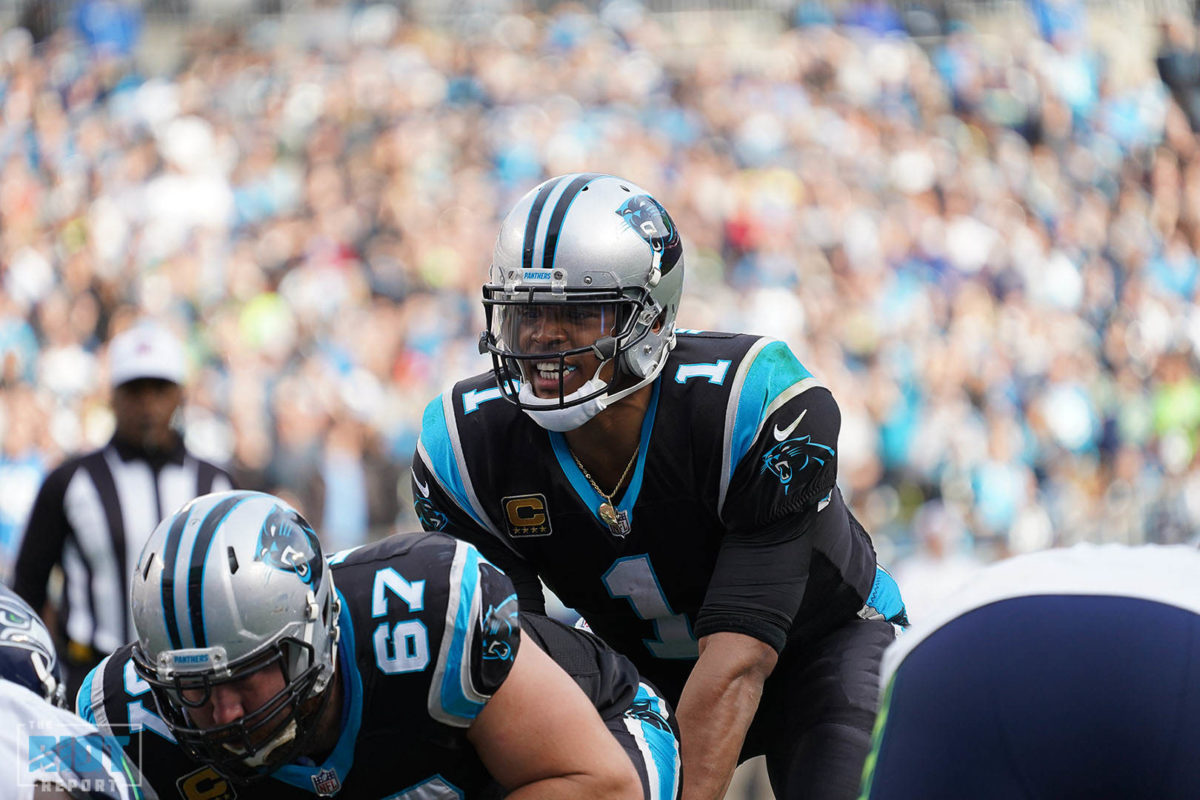To be fair, the mesh concept with Moore and Wright is effective at attacking man coverage and Newton does a decent job of getting the ball out in time and if Moore had been able to slip that first tackle, then this third-down play is likely going for a score; there are things to like here.
However…
What is frustrating here is that this is a quick underneath concept, and that the Panthers really didn’t need McCaffrey’s help to block – Greg Van Roten does nothing on this play, and this is not a criticism of him as such, but rather a blocking scheme that uses six men to do the work of five. As a result, the Seahawks are able to blitz while still having two help defenders against the Panthers’ four receivers. Furthermore, I have no idea what Greg Olsen’s route was meant to achieve, by running across the middle, all he is doing is clogging up the middle of the field while allowing the underneath safety to take away three routes at once as they cross the middle of the field. Similarly, I don’t know that Samuel’s route was doing much other than occupying a defender.
This feels a lot like a play where there is a concept with a couple of routes, and everybody else has just been given a route to run interference – which may have been the case.
While these concept-reliant plays are far from unique to Norv Turner, this is not the play to call with the game on the line. If Moore doesn’t get open, the play fails. Your best route runner and the player who has over 200 yards from scrimmage on the day is being used in pass protection, Wright’s route only works as a natural pick against man coverage and both Olsen and Samuel don’t stand any chance of getting open against man coverage. The reason why RPOs and read options have come into vogue in recent seasons is that they allow an offense to keep its options open for as long as possible and work by reacting to what the defense does. This play does the opposite of that, it commits Cam to a route before the snap, and if that doesn’t get open then it’s down to Cam to improvise.
This just isn’t smart football.
I also planned to write about how the Seahawks engineered their game-winning drive, but if you give a future Hall of Fame quarterback like Russell Wilson 1:45 to get into field goal range from his own 42, he is going to succeed a majority of the time. Yes, the Panthers’ defense could have done better and yes, the long completion on third down is frustrating, but the mistake that led to the loss was the the drive that gave them the ball back. If you want to argue that Gano should have made the kick, then yes, he probably should, but he probably shouldn’t have made the second longest game-winning field goal in NFL history to win the game against the Giants in Week 5.
You have to take good with the bad, and if you’re consistently relying on long field goals to not lose games, you’re focusing on the symptom instead of the disease.
The Seahawks didn’t play badly on Sunday, they even played well in parts, but this was a game that the Panthers should have won. If the Panthers had run the ball three times and then missed the kick, I would have understood what they were trying to do, even if I disagreed with it – but how the Panthers approached their final offensive drive stunk of a team trying to have their cake and eat it too, failing to commit to either running out the clock or going for the first down. The problem with the third down playcall aside, it was the failure to make a firm decision under two minutes that makes this loss so hard to swallow.
You can call this poor clock management or poor game-planning – whatever you want to call it, it is but the latest way the Panthers have found to throw away a game.
And it has me annoyed.
Clips and Pictures Via NFL Game Pass.



